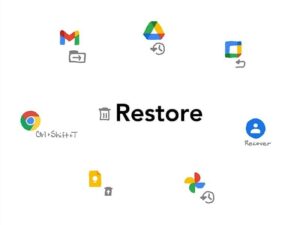COVID-19 made what was once optional into a mandatory part of business strategy, and 2021 will only move the needle further to the digital side, Forrester predicts.

Image: Olivier Le Moal, Getty Images/iStockphoto
Forrester has released its predictions for digital business in 2021, and it sees big changes coming as the post-pandemic era continues to rapidly transform the business landscape. “What many considered optional became imperative overnight,” Forrester said of digital business, citing that one retailer saw five years’ worth of digital adoption happen in only five months due to COVID-19 lockdowns.
2021 is the year, Forrester predicts, the majority of businesses will invest in having a full-fledged digital presence.
Like other reports comprising Forrester’s larger portfolio of 2021 predictions, this one on digital business breaks down into five key points.
1. 20% of worldwide businesses will create digital divisions
Digital engagement will become the number one driver of customer value in 2021, Forrester predicts, and many global organizations will join organizations like BP, John Deere, and Siemens in launching data, artificial intelligence (AI), and software-driven divisions.
SEE: TechRepublic Premium editorial calendar: IT policies, checklists, toolkits, and research for download (TechRepublic Premium)
“By the end of 2021, we expect 30% of $1 billion-plus firms to have a significant digital product portfolio and 20% to stand up digital divisions dedicated to launching disruptive products,” Forrester said.
2. Cloud-first strategies will dominate digital growth
“Every new digital division will embrace innovation through ecosystems, and we expect a further 50% of enterprises to make cloud-centric transformation a priority, moving business-critical operational apps and all experience apps into the cloud,” Forrester predicts.
A key part of this strategy will be aligning internal and external resources, which Forrester said organizations should do with a specific strategy in mind, like a customer or business outcome.
3. “Buy” buttons will be everywhere
2021 will be a year in which businesses will toss a variety of sales channels at the wall to see which ones stick. “It won’t just be a decision between Shopify+ versus custom-coding a headless commerce solution—or Facebook Shops versus Amazon Business. It will be about experimenting with all these channels to build new types of direct customer relationships,” Forrester said.
A desire to stand out among the competition will further drive adoption of deep personalization, augmented reality (AR) and virtual reality (VR) sales, and other content-first strategies, Forrester predicts.
4. DOP will further replace ERP, leading to more platform innovation
Digital operations platforms (DOP), which combine back-office business tools into a single product, were hot in 2020, and they’ll continue to grow as a replacement for legacy enterprise resource planning (ERP) software. Greater DOP adoption will push vendors to differentiate their products, which is a good thing for their clients.
“New DOP offerings will become AI-based and ecosystem-oriented, tailored to industry and even micro-vertical use cases and requirements. The payoff is digital bedrock for operations and insights—and surfacing the competitive core of your business to new products and experiences,” Forrester said.
5. Outcomes-based pricing will grow for digital transformation services
Businesses looking to embrace digital business strategies will be looking to lots of outside vendors, and Forrester said that 50% of new transformation services contracts will include a pay structure based on meeting particular outcomes.
SEE: Chatbot trends: How organizations are leveraging AI chatbots (free PDF) (TechRepublic)
“Buyers of transformation services will expect providers to bring alliances, end-to-end expertise, and software and data assets to accelerate time-to-value,” Forrester said. Consultants, tech service providers, and other agencies will need to be aware of this potential and plan budgets accordingly.
Also see
Source of Article




